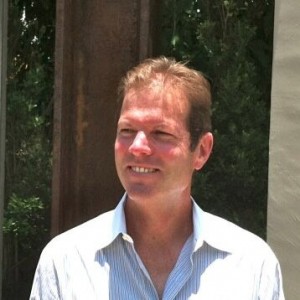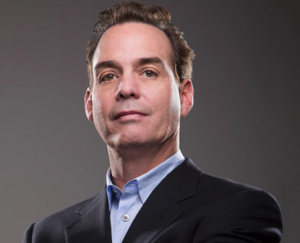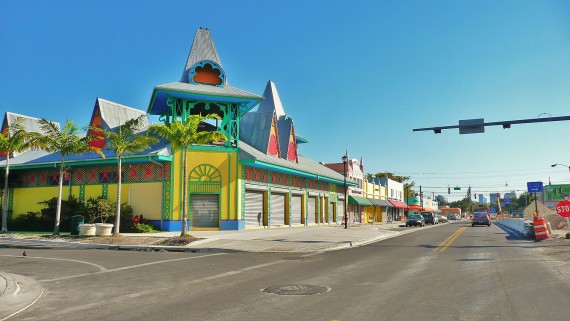Little Haiti, a neighborhood covering 3.5 square miles bordering the Design District to the south and the MiMo District to the east, has played a major role in Miami’s rich cultural history. Within its boundaries are Lemon City and Little River, a pair of historic enclaves that helped shape the city in the early 1900s.
Named after sweet lemon trees native to the area, Lemon City predates Miami’s incorporation in 1896. At the time, 300 people resided in Lemon City where the city’s pioneers created a 15-building mini-metropolis that had three general stores, a barber shop, a livery stable, a blacksmith, a sawmill and a handful of saloons. At the start of the 20th Century, development spread to Little River, where the Archdiocese of Miami built its “mother church,” the Cathedral of St. Mary in 1929. Today, the church is a reflection of Little River’s diversity with mass services held in English, Spanish and Haitian Creole. The same year St. Mary was completed, milk mogul James Neville McArthur built the processing and distribution plant for his company, McArthur Dairy, which remains in operation today.
The 1970s and 1980s brought in waves of Haitian immigrants fleeing poverty and oppression under the rule of dictators Francois Duvalier and his son Jean-Claude Duvalier. More than 150,000 asylum seekers flooded Miami with many of them settling in Lemon City and Little River, as well as areas connecting the two communities. Haitian activist and artist Viter Juste is credited with giving the area its Little Haiti moniker after his fellow countrymen established small businesses serving Haitian goods and services.

Peter Ehrlich
By the late 1990s, real estate investors like Peter Ehrlich began scouting Lemon City and Little River for deals as land prices and rents skyrocketed in South Beach. “Rents had gone up from 300 percent to 1,000 percent,” Ehrlich told The Real Deal. “It was becoming more difficult for mom and pop stores to get established on the beach. I found Lemon City had the potential to attract them because it is conveniently located to Biscayne Boulevard.”
Ehrlich said he controls about 120,000 square feet of commercial space in Lemon City and Little River. One of the businesses he lured away from South Beach is Aperture Studios Miami, a professional photography studio that has been in business for more than 20 years. “We have 10 artists leasing space inside a beautiful 5,000 square foot gallery,” Ehrlich said. “And we have some Design District retailers that lease warehouses from us for storage.”
Signs of Change
In 2014, the owners of Wynwood hipster cafe Panther Coffee announced it was converting a 3,000-square-foot warehouse space in Little Haiti into a combination roaster, training facility and coffee shop. Located inside the former Cecibon Pikliz bakery on the corner of Northwest 59th Terrace and Second Avenue, Panther Coffee’s new hub signaled the beginning of major development wave in the neighborhood.
Last year, during a real estate panel hosted by Bisnow, Panther Coffee owner Leticia Pollack hailed the move to Little Haiti as a smart one. “We’re going to be able to expand our wholesale operation and have our education lab,” she said. “We’re excited to be in a new, happening neighborhood again.”

Robert Zangrillo
In another sign of surging interest in Little Haiti, Miami Beach real estate investor Robert Zangrillo paid $15 million for a five-property portfolio in Lemon City in August 2014. The deal included the 6.5-acre Magic City Trailer Park at 6001 Northeast Second Avenue and a mixed-use building at 6041 Northeast Second Avenue that dates back to 1902.
A year later, a California company called API OS Holdings LLC plunked down $6.2 million for a former 178,810-square-foot Bank of America building at 7924 Northeast Second Avenue. The owner has yet to disclose plans for the property, but the previous owner had contemplated building a 110-unit affordable housing project.
Interest in Little Haiti commercial space has caused lease rates to grow by 100 percent or more, Ehrlich said. “When we started in 1998, rents were $2 to $3 a square foot,” he said. “Rents are now at $10 to $30 a foot. However, it’s still considerably less than what people pay in Wynwood and MiMo.”
Transportation
In addition to various public bus routes that run north to south on main arteries like Biscayne Boulevard, Northeast Second Avenue and North Miami Avenue, Miami-Dade Transit also offers the Little Haiti Connection, a small bus that circulates through the neighborhood.
Most expensive residential sale
29 Northeast 48th Street, three bedroom, three-and-a-half bathroom, 1,940 square-foot single family home sold for $660,000 on Sept. 7.
Commercial broker’s take
“There are a lot of different types of commercial development going on that is attracting artists and other creatives leaving pricier areas like Wynwood, the Design District and South Beach. We have seen quite a bit of changes happening recently,” Tony Cho, Metro 1 Properties
Demographic changes from 2000 to 2015
Population: 33,382 up 6.7% from 2010 and up 9.3% from 2000
Median age: 34
Median income: $47,127
Average household net worth: $299,334
Price trends
Median sales price per square foot: $137, 3.9 percent lower compared to the rest of Miami-Dade County
Increase in average rent over the last year: 15% to $1,476
Most expensive home on the market
201 Northeast 43rd Street, two bedroom, two bathroom 1,739 square-foot single family home for $1.3 million
Least expensive home on the market
Apartment 14, 60 Northwest 76th Street, one bedroom, one bathroom 540 square-foot condo for $65,000
New Development
Over the summer, Cho Dragon’s Magic City Properties, a company controlled by Zangrillo and Metro 1’s Cho, approached Miami city officials about the possibility of developing a special area plan for the assemblage that includes the Magic City Trailer Park at 6001 Northeast second Avenue. Cho told TRD the project, Magic City, straddles Lemon City and Little River.
“Right now it is just an assemblage of different properties that we are renovating and repurposing to cater to the needs of creative and technology businesses,” Cho said. “We’re activating and creating a sense of place. We’re hoping to create an innovation district there.”

Tony Cho
Still, Cho said Little Haiti is not ready for large-scale residential development. “It’s not quite there,” he said. “As the neighborhood evolves and people are looking for that smaller, affordable millennial format, Little Haiti can address that need.”
More recently, Conway Commercial Real Estate and Urban Atlantic Group put the finishing touches on MADE at the Citadel, a co-working space at 8325 Northeast Second Avenue. The developers paid $1.7 million in 2014 for the MiMo style building that once housed the former Bellsouth headquarters. The group spent another $1 million ripping out two layers of tile to uncover terrazzo flooring, tearing down walls, scrapping a dropped ceiling, adding new air conditioning, wiring and other renovations.
For $100 a month, a tenant gets a seat in an open space. Another $1,400 a month is enough for an office. Spaces run from 90 square feet to nearly 1,000 square feet and tenants get access to Internet, coffee, water, tea, a kitchen with a refrigerator and microwave, as well as access to all the common areas.
In June, Miami’s planning and zoning board paved the way for the first restaurant with a full-service bar in Little River. Steve Livigni and Pablo Moix and their partners are opening a craft cocktail lounge and bar called Apollo Motors within a former car repair shop at 7220 North Miami Avenue that is owned by Avra Jain and Matthew Vander Werff, who have turned their attention to Little Haiti following Jain’s renovations of motel properties in the Miami Modern Biscayne Boulevard Historic District, including the Vagabond Hotel.
Jain and Vander Werff want to transform a 20-block area located roughly between Northwest 71t Street, Northwest 75th Street, North Miami Avenue, and Northwest Second Avenue. They have brought in tenants like Fountainhead artist studios, the mega-training gym Fast Twitch, Classic Motor Car Company, Barkhaus pet-boarding, and a studio for fashion designer Fabrice Tardieu.
Last week, Jain and another real estate partner, Joe Del Vecchio, sold a gutted building at 7924 Northeast Second Avenue for $10 million to New York investors who are planning a live/work office development.
